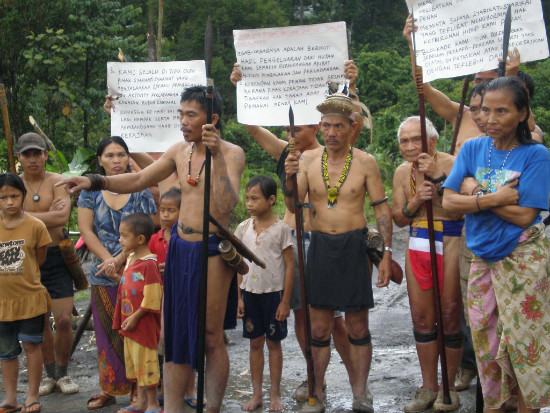
It won't happen until after 2020, but is seen as vital to restoring California's dwindling salmon stocks. The decommissioning would be the nation's largest and most complex dam removal project.
Klamath River dam
By Bettina Boxall
September 30, 2009
In a major boost for California's dwindling salmon stocks, a utility company has agreed to the removal of four hydroelectric dams that for decades have blocked fish migrations on one of the West Coast's most important salmon rivers.
The dam decommissioning is vital to restoring the Klamath River, which for years has been the subject of bitter feuding among farmers, fishermen and tribal interests.
It would open historic salmon spawning and rearing grounds on the upper reaches of the river, which winds from southern Oregon through the Cascades and Coast Ranges to California's Pacific Coast.
"We can't restore the river solely by removing the dams, but we can't restore the Klamath without removing the dams," said Steve Rothert of the environmental group American Rivers, one of 29 parties negotiating the dam settlement.
Backers say the decommissioning -- which still must be approved by the federal government -- would be the nation's largest and most complex dam removal project.
"We're about to make changes to the Klamath Basin that will be observable from space," said Craig Tucker of the Karuk tribe, which traditionally fished for salmon.
For PacifiCorp, the Portland, Ore., utility that owns the dams, consenting to the end of the J.C. Boyle, Copco No. 1 and 2 and Iron Gate dams ultimately was a business decision.
The utility, a subsidiary of billionaire Warren Buffett's Berkshire Hathaway empire, faced litigation and expensive relicensing requirements for the dams, the oldest of which dates to 1918.
"As a utility, we don't typically take dams out," said Dean Brockbank, PacifiCorp's lead negotiator. "We have achieved an agreement that is in the best interest of our customers -- the lowest cost and risk compared to the alternative."
Under the draft settlement, which the parties hope to sign by the end of the year, PacifiCorp would continue to operate the dams until 2020. Then they would transfer the hydropower facilities to another entity, likely the federal government, for dismantling.
The Interior Department has to make a determination that the dams' removal will be in the public interest, a sign-off that Brockbank said is not guaranteed but that the company expects to get.
"This agreement marks the beginning of a new chapter for the Klamath River and for the communities whose health and way of life depend on it," Interior Secretary Ken Salazar said in a statement.
The settlement terms call for PacifiCorp ratepayers in Oregon and California to pay a surcharge to finance a company contribution of up to $200 million for dam removal and river restoration. California also would provide as much as $250 million in bond money.
"We're hopeful this will result in dam removal, but a number of things have to occur before that can happen," said Kirk Miller, deputy secretary of the California Natural Resources Agency. "It is a complicated matter."
The dams, which range in height from 33 feet to 173 feet and are spread across 65 miles of the Klamath, haven't just kept chinook and coho salmon out of the upper river and its tributaries. They also have hurt water quality.
In the summer, stagnant pools of warm water behind the dams become a breeding ground for toxic algae.
The Klamath Basin made national headlines early this decade when federal water managers cut irrigation deliveries to preserve fish flows, sparking protests from irate farmers. The following year, when more water was released to agriculture, tens of thousands of salmon died, floating in the river's shallow waters and washing up on its banks.
"We are redefining what restoration and collaboration means in a place that has historically been the West's most notorious watershed for lawsuits, civil strife, guns in public," said Chuck Bonham of Trout Unlimited, an environmental group that works to preserve fish habitat.
Along with the Columbia and the Sacramento rivers, the Klamath has traditionally been one of the country's most productive salmon rivers. But the West Coast salmon stocks have been in such poor shape that for the last three years, California has canceled its commercial salmon fishing season.
The Klamath has "been dammed and polluted nearly to death," said Glen Spain, northwest regional director of the Pacific Coast Federation of Fishermen's Assns.
The dam settlement follows an earlier restoration agreement that also is due to be signed by the end of the year.
The restoration proposal has come under fire from some environmental groups that complain it preserves irrigation deliveries for Klamath Basin farms at the expense of fish and also allows continued farming in wildlife refuges with critical wetlands.
"Dam removal is still tied to this albatross," said Steve Pedery of Oregon Wild.
Jeffrey Mount, founding director of the UC Davis Center for Watershed Sciences and a member of the American Rivers board, warned that tearing down the dams would not solve all of the Klamath's water quality problems.
"There is this assumption that a miracle will occur when the dams come down," he said. "Removal of the dams does not address the broader problems of the basin."
He described Upper Klamath Lake, which feeds the river, as a "big, warm, green pile of goo" that could make things worse for the fish once the dams are gone.
Still, he added, "This is incredibly exciting."
bettina.boxall@latimes.com
Copyright © 2009, The Los Angeles Times
